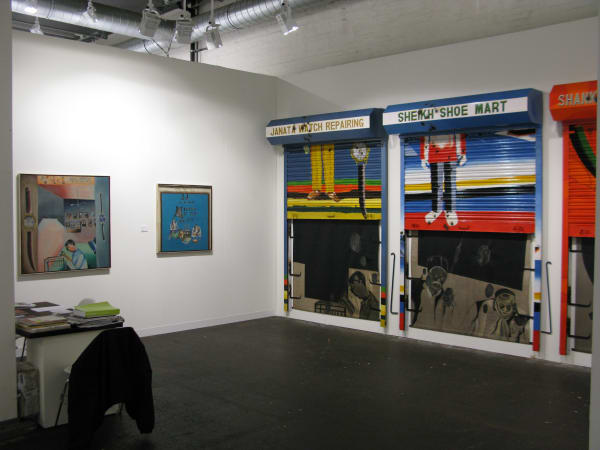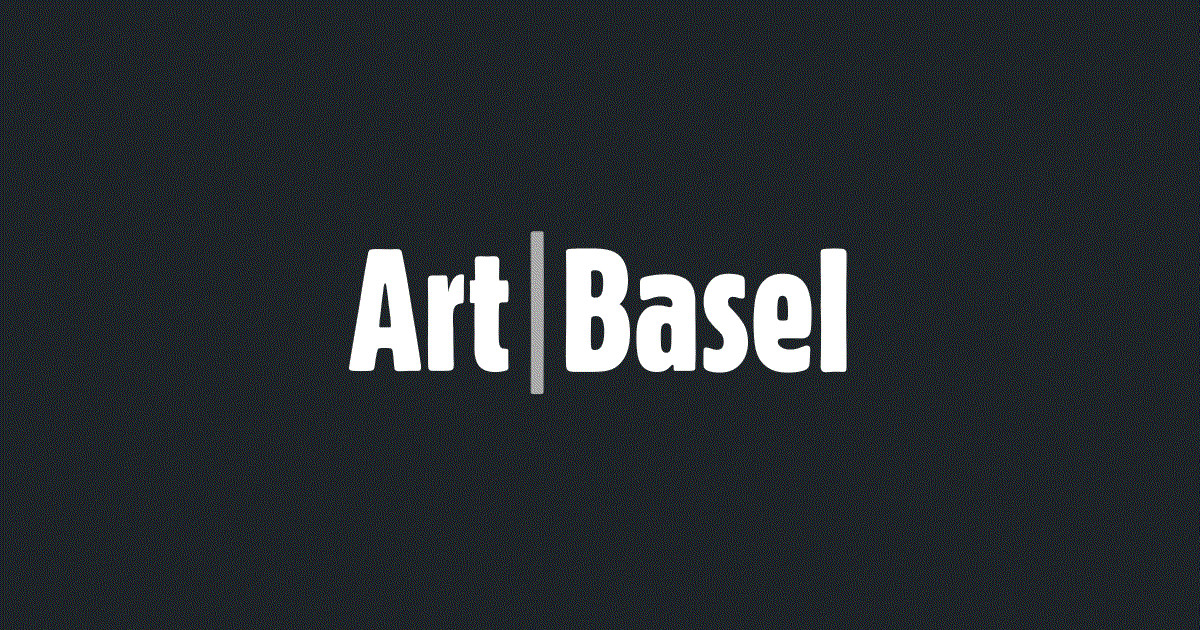Public Days: Jun 16 - 20, 2010
Chemould Prescott Road participates with a curated booth in Art 41 Basel of two artists from two generations: Bhupen Khakhar and Atul Dodiya. Bhupen Khakhar, (1934-2003) started out as a mentor to the younger Atul Dodiya, (1959) but as the years wore on, the relationship turned into a friendship lasting over 20 years until the death of Khakhar in 2003.
We have juxtaposed here new shutter paintings by Atul Dodiya that respond to iconic paintings from the 1970s by Bhupen Khakhar.
In the late 1990s, Dodiya began a series of paintings on full-size metal shutters, presenting a range of different images on the two painted visual planes. The “shut” works refer to a critical event in India’s contemporary political history, the sectarian “Bombay riots” of 1993 that followed the destruction of an important mosque, the Babri Masjid, in the northern Indian town of Ayodhya by Hindu fundamentalists in December 1992. The riots effectively closed the city and its businesses down and challenged Bombay’s cosmopolitan heritage, which had abundantly accepted India’s plurastic culture.
Dodiya has continued his series of paintings on shutters in this decade, as part of a practice that continually challenges the conventions of painting in India. Dodiya’s practice has been quoting from a range of art historical sources and political imagery. This new series of shutter paintings respond to a group of works Khakhar called “trade series” beginning in 1972. Having accessed three specific works from this series namely: “Janta Watch Repairing,” “Sheikh Shoe Mart” and, “Shanker Saloon.” where Khakhar depicted middle-class figures from a wide range of professions which included the barber, the watch repairer, the shoe repairer. The new work of Dodiya has quotations from Malevich’s Peasant paintings on the outer shutter; but as you open the shutter, he quotes from the earlier minimalist series of Malevich, of the cross, the circle, and the square. Entwined within these monochromatic references of Malevich are juxtaposed images of Khakhar’s images from the paintings on display. On the hood of each of the rolling shutters are mentioned the actual names of Khakhar’s paintings, giving you the feeling of actually entering “Khakhar’s shop.”
While the politics of the 1970s provoked Khakhar to give an image to and celebrate the diverse workers common across urban India, Dodiya’s shutter works poignantly refer to the historical moment when their work and lives were traumatically interrupted and threatened. The presentation at Art 41 Basel, contextualizes Khakhar and Dodiya’s works from these important periods, the relationship between their works, and also highlights Dodiya’s ability to innovate and translate earlier art historical achievements – including his own.


